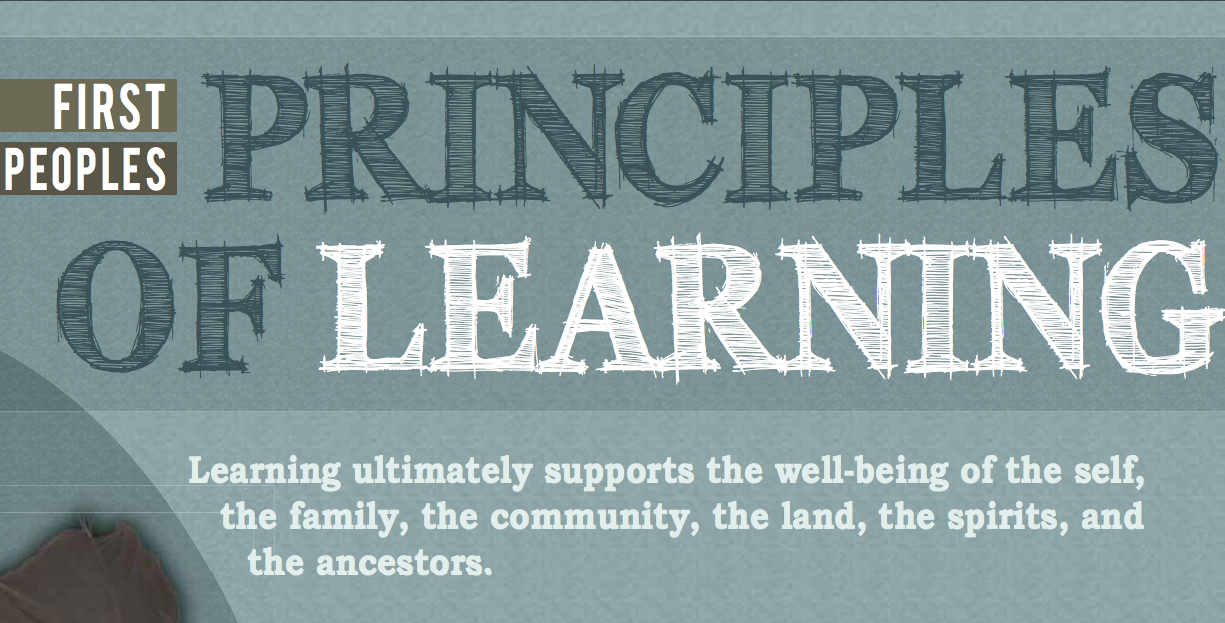Part two of a series. Read part one.
There’s no way that I can fully comprehend what “well-being” means to Canada’s First Peoples as I am not Indigenous and I have had barely any exposure to the cultures of the original inhabitants of this land, I’m ashamed to say. I also suspect that the original term for which “well-being” is the nearest English equivalent includes a far more expansive worldview than can be captured in translation.
I wonder if the Greek concept of eudaimonia, sometimes translated to mean “the highest human good” or sometimes to mean happiness is compatible with what indigenous peoples mean by well-being? Or is the Japanese concept of ikigai, translated as being “a reason to live” a better fit?
Perhaps the work of Martin Seligman with his concept of PERMA (positive emotion; engagement, relationships, meaning, achievement) comes closest to capturing the main ideas behind this principle of learning? I wonder.
Even though I might not completely understand what First Peoples mean by well-being, I certainly have an acute sense of what it is not. There is no well-being in a classroom with no laughter, a classroom in which students feel lonely in a crowd. There is no well-being when there is extreme anxiety and overwhelming stress experienced by students who find no meaning or purpose in what they’re doing other than that it’s part of the plot of the story of school.
The story that says that if you go all the way through school, from kindergarten to grade 12, and then go to university, and then graduate, you’ll get a good job and then you’ll be happy. The ridiculousness of this story is perfectly illustrated in Alan Watts’ Music and Life analogy in which he exposes the false promise of education’s holy grail.
This myth about what school is for continues to be perpetuated even though we know that there is absolutely no guarantee that having a job that is well-paid leads to happiness as evidenced by rates of depression and suicide amongst highly-qualified professionals. To put it another way, there is no guarantee that if our children do everything right to get a good job, that the job will do much for their well-being beyond allowing for the provision of material wealth, which our modern western European culture positions as the pinnacle of happiness.
In our society, high purchasing power is equated with high levels of happiness, a necessary myth when our economy depends on increasing consumption of all kinds of stuff from cars to clothing. We are taught to fear a lack of growth in “consumer confidence” as though the worst thing that can happen is for us to stop shopping.
But what is the logical outcome of an unlimited extraction of the earth’s resources in order to manufacture the stuff that we are expected to keep purchasing so that we’ll be happy?
On August 2 this year, we used up the amount of resources that it takes the planet a year to replenish. We used up in seven months what it will take 12 months to replace. That’s the denouement at the end of the Story of Stuff.
Can we really afford to perpetuate the myth that cancerous consumption leads to happiness?
If ever there was a time to replace the current stories of school and of stuff with stories that the First Peoples developed over thousands of years while they sustained a regenerative relationship with their lands, that time would be now.
Well-being for our children and for our planet should be the ultimate goal of learning. We can’t afford for it not to be.
But what would that look like in the classrooms that our children will be in next month?
In her blog explaining the background of First Peoples’ Principles of Learning, Jo Chrono explains that it’s important that the learning principles operate in a “robust and healthy learning environment.” Now that’s something I do know about! Creating an environment that is engaging along with building a sense of community in my classroom have been my guiding pedagogical principles ever since I began teaching almost 30 years ago.
It’s not always been easy. Focusing on children’s well-being means being willing to get into trouble for allowing students to break school rules that disregard their physiological needs. It also means apologizing to students when there are things you know are not good for their well-being but about which you can do nothing.
But the task is not impossible. It’s not difficult to encourage laughter while learning. It just takes a little bit more planning to ensure that students are not forced to work when they’re fatigued. And it’s not too difficult to always keep in mind that the child sitting in front of you is more than just an empty vessel that needs to be filled with facts. That child is one node in a network of connections that include her family, her community, her ancestors, and, perhaps most importantly, the land around her.
As Neil DeGrasse Tyson says, the most amazing fact is that we are connected to the earth chemically, to each other biologically, and to the the universe atomically. But then First Peoples have always known that. They’ve always known that our individual well-being is directly connected to the well-being of everything around us.
As the impacts of climate change increasingly affect the world around us, let’s help our children to see that in everything they learn at school.
Image: First Nations Education Steering Committee
Chip in to keep stories like these coming.




